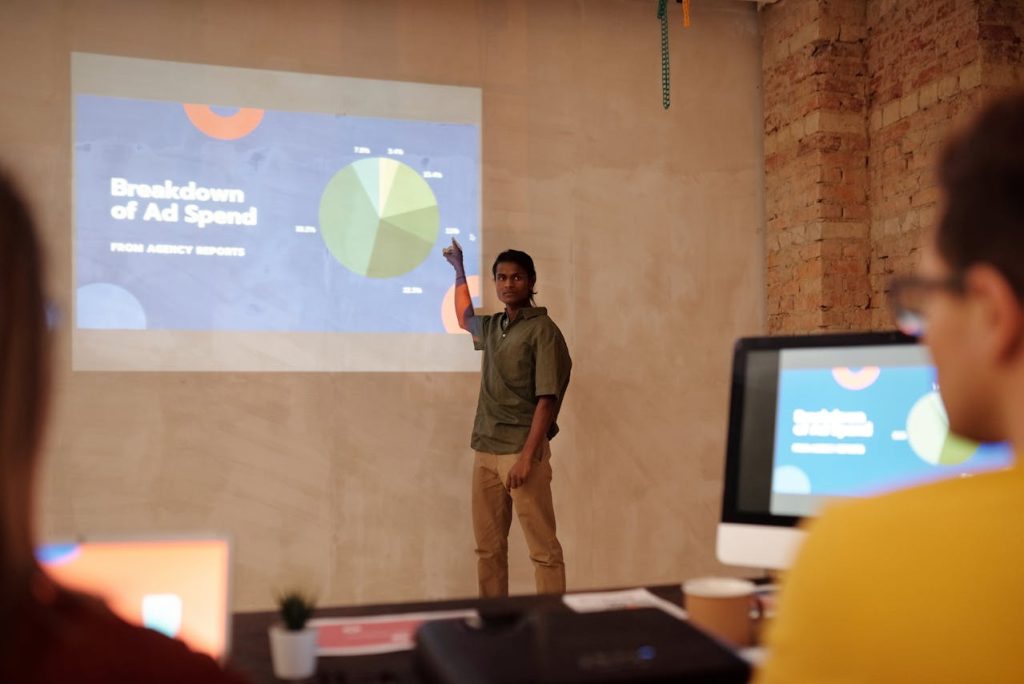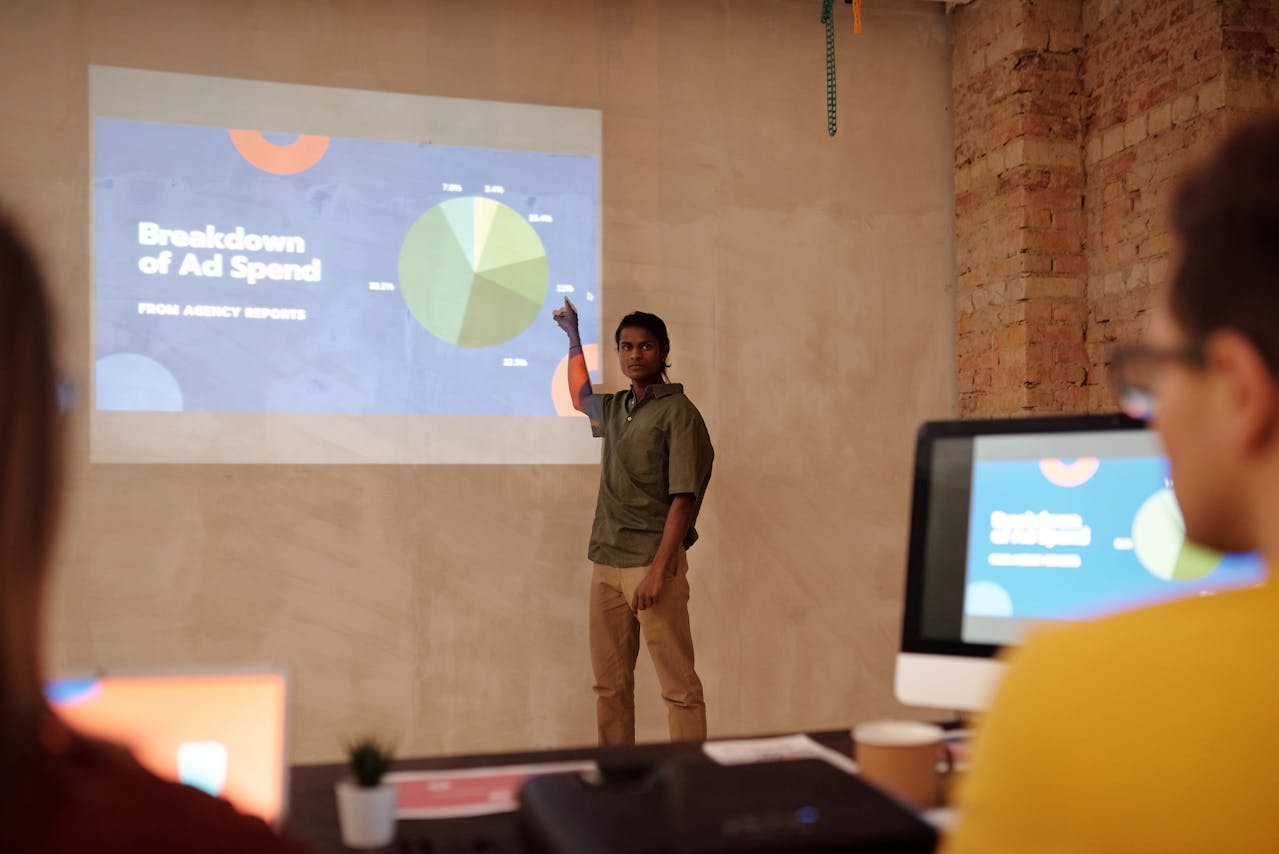Google penalizes law firm websites for breaking its rules or using bad SEO tricks, and most firms never see the warning signs until the traffic falls. To stay unpenalized, law firms must learn what triggers these penalties, like spammy links, thin content, or slow load speeds. Minor shifts in the ranking of new visitors tend to indicate secret issues from Google’s end. Search penalties can be from updates or manual checks, and the fix for them is to isolate the cause and clean up site issues. To maintain your firm’s online presence, monitor site statistics and stay current with SEO best practices. The bulk of this post will deconstruct typical penalty triggers and demonstrate how to correct them before they damage your firm’s exposure.
Key Takeaways
- Because Google penalties can tank a law firm website’s search visibility, it’s important to know how to comply with Google’s quality standards and audit site practices.
- Manual and algorithmic penalties can occur from spammy links, low-quality content, or keyword stuffing. Periodic content, backlink, and technical health audits are essential for early identification.
- Trust violations, user dissatisfaction, and efforts to gain an unfair advantage through manipulative SEO are common causes of penalties, and transparent, ethical practices are particularly important for legal sites.
- Analytics and GSC are great for detecting penalties fast, and proactive audits of content and links help ensure ongoing compliance.
- Recovery is about an effective attack on the cause, disavowal, good content, and a reconsideration request, then ongoing monitoring to ensure it doesn’t happen again.
- Law firms can avoid future penalties by focusing on user intent, cultivating real authority, adopting technical SEO best practices, and balancing AI content with original legal knowledge for long-term online authority.
What Is A Google Penalty?
A Google penalty is a loss in a website’s search position or traffic because the website violated Google’s guidelines. Law firm websites struck by such penalties can see their visibility plummet, resulting in a corresponding decline in leads and revenue. Penalties may affect the entire site or only specific pages. Frequently,y they’re from unnatural backlinks or keyword stuffing or hidden text, or low-quality content. Google penalties come in two main forms: manual actions, imposed by real people at Google, and algorithmic adjustments, triggered automatically by Google’s systems. Either kind can leave a law firm’s online client acquisition efforts in shambles.
Manual Actions
Manual penalties occur when a Google employee reviews a site and determines it is breaking the rules. You generally receive a message in Google Search Console if this happens. These penalties occur when a site employs sketchy methods, such as spammy backlinks or thin, low-value content that’s not useful. Sometimes, it’s user-generated spam or hidden text designed to fool search engines. Because these are human-reviewed, they can be specific, focusing on just a section or the entire site. If your law firm suffers a manual penalty, acting fast is crucial. Eliminate or repair the issue, then file a reconsideration request. Recovery may take weeks or months, but it can happen with the correct actions.
Algorithmic Adjustments
Algorithmic penalties aren’t given by humans; instead, Google’s algorithms detect things such as keyword stuffing, unnatural backlinks, or other tricks designed to manipulate rankings. When they are detected, the site’s rankings plummet, sometimes overnight. Unlike manual penalties, you won’t receive a distinct alert in Search Console. Instead, you’ll experience sudden traffic or ranking declines. Such as over-optimized anchor text or duplicate content. They tend to come after updates such as Google Penguin or Panda. It can be very, very long-lasting, years, even if issues are not resolved. Utilizing tools like Panguin or Semrush’s Backlink Audit can assist in identifying these issues promptly. Staying on top of Google’s quality guidelines is your best defense, as these are automatic, ongoing penalties.
Why Guidelines Matter
Google’s quality guidelines are clear: focus on helpful, original content. Don’t resort to such tricks as keyword stuffing, buying links, or hiding text. Best practices don’t just avoid penalties; they make your law firm compete on a level playing field in search results. Disregard these rules, and you can do serious and permanent damage.

Why Google Penalizes Law Firms
Google penalizes law firm sites when they break trust or use unfair tactics or provide poor experiences. Penalties may be manual or algorithmic, and either can eliminate a site’s visibility, damaging client intake and reputation. The table below lists some main reasons for penalties:
Reason | Example |
Unnatural backlinks | Links from spammy or unrelated sites |
Manipulative link schemes | Buying, selling, or trading links for services |
Thin or low-quality content | Service pages with little helpful info or duplicate content |
Keyword stuffing | Pages packed with repeated phrases |
Technical site issues | Poor site structure, duplicate tags, or slow load times |
Deceptive practices | Misleading claims, fake testimonials, or hidden text |
Trust Violations
Trust violations are things that undermine the relationship between a law firm and its visitors. Trust is paramount to Google’s penalty system, particularly for legal sites, as users depend on them for crucial information. Deceptive sites—say by publishing fake credentials or fraudulent testimonials—expose their reputation and their search rank to harm.
Hiding fees, switching terms without notice, or posting bogus client reviews all damage trustworthiness. When faith departs, so does the firm’s advantage—customers bolt, and search engines will demote the page. Google desires law firms to be candid and righteous. Transparent data, complete transparency, and easy-to-find contact details prevent sanctions and retain visitors.
User Dissatisfaction
User experience forms the basis for Google’s ranking. If visitors struggle, whether because of slow load times, bad mobile design, or disorienting navigation, Google might view the site as unhelpful. Thin content, keyword-stuffed service pages, or broken links repel people, indicating low worth.
Sites need to provide answers, not just selling points. Pertinent, current information earns confidence and maintains visitor interest. Hard to say, but listening to feedback, fixing slow pages, and updating info all help. Google cares about value and convenience.
Unfair Advantages
Unfair Advantage | Example |
Manipulative link building | Scholarship link schemes, buying or trading backlinks |
Content stuffing | Page filled with repeated keywords |
Hidden text or links | White text on white background |
Yes, some law firms still fool with the scores. Purchase backlinks, scholarship link spam, or swaplinks for goodies, and provide a short-term uptick but long-term damage. Google’s penalties exist to halt these moves and level the playing field. Actual achievement springs from equitable strategies, sincere material, and significant customer care.
How To Spot A Penalty
Google penalties can silently strangle your law firm website. Identifying penalties as soon as they occur is the key to saving your site. Effective methods for spotting penalties include:
- Monitoring traffic for sudden decreases or irregularities.
- Google Search Console manual action/site-wide notifications – 3.
- Auditing site content for quality, relevance, and originality
- Examining backlink profiles for spammy or unnatural links
- Reviewing technical health, including mobile optimization and site performance
1. Analyze Traffic
One of the earliest symptoms of a Google penalty can be a sudden huge drop in your traffic. Employ something like Google Analytics or Panguin by Barracuda Digital to track trends and watch for sharp shifts. These tools allow you to contrast traffic before and after potential penalty days, providing unambiguous visibility into when changes occurred.
Be sure to compare those numbers with your historical data. If you see an unaccounted-for sharp dip in your sessions that you can’t explain by seasonality or recent updates, it might be a signal of an algorithmic or manual action. Check your visitor behavior — pages per session, bounce rates, and session duration — for hints of changes in user behavior, which can be part of a penalty trigger or technical issue.
2. Check Search Console
If you have access to Google Search Console, check the ‘Manual Actions’ section for penalty alerts. This area will display if your site has been hit with a manual penalty, like a “Site Wide Action,” where every page takes a hit.
Be on the lookout for algorithm update alerts, as these can indicate changes affecting your rankings. Google’s notifications will specify what’s amiss—such as unnatural links or keyword stuffing—so you can address them. Frequent checkups guarantee you’re updated about site health promptly.
3. Audit Your Content
A thorough content audit searches for hidden text, keyword stuffing, or duplicate content violations. Low-quality or off-topic posts can activate algorithmic penalties.
Verify the uniqueness and worthiness of each page. Employ plagiarism checkers to ensure novelty. Subtract or rework thin or duplicate content for Quality and Google-compatibility.
4. Examine Backlinks
Check your link profile for spammy sources or unnatural anchor text. Strip or deny links from sketchy domains to defend your site’s juice.
Target quality sources, with natural anchor text. Healthy link profiles steer clear of manual and algorithmic penalties.
Keep anchor text varied.
5. Review Technical Health
Check your website for technical problems such as broken links, slow page speeds, or bad mobile design. These can damage user experience and increase the chances of a penalty.
Regular technical checks keep your site healthy.
Recovering From A Penalty
Google penalty recovery is not an instant thing; it’s a gradual process. To recover from a penalty, law firms need to track down the precise reason for the penalty and fix it. Recovery can extend for days to months, depending on the severity of the matter and the timeliness of corrective efforts. Google penalties can be reversed because algorithm updates are systemic, not site-specific. At the heart of recovery is identifying the source of the issue—whether it be spammy links, low-value content, or technical vulnerabilities—and resolving it. Continued monitoring of backlinks, site health, and content quality is needed to avoid future penalties.
Disavow Harmful Links
Locate any toxic backlinks via Google Search Console or a dedicated backlink checker. Pay particular attention to links from spammy or irrelevant domains, and those with unnatural anchor text. Log every suspect link and maintain a record.
Send a disavow file to Google, with all domains and URLs you consider harmful. It’s this file that you upload through the Disavow Tool in Search Console, indicating to Google that you don’t want these links to pass value to your site. A clean backlink profile is essential to regain Google’s trust; thus, repeated checks are unnecessary. Post-disavowal, I monitor new incoming links and conduct frequent backlink audits. This aids in identifying dangerous areas in advance and keeping a credible reputation.
Prune Low-Quality Content
Run a site audit to identify thin, duplicate, or out-of-date pages. Cut the fluff, or combine it into richer pages, to keep your site trim. Maintain a quality threshold for published content, making certain that every page contains distinct and beneficial knowledge.
New, useful content aids recovery by demonstrating to Google that your site is credible and useful. Keep your content fresh — introduce new case studies, legal updates, or FAQs. Frequent refreshment can get you both ranking love and a dose of immunity from future penalties.
Submit Reconsideration Request
Work up a reconsideration request only after everything is clean. Be explicit about what actions you’ve taken—eliminating noxious links, refining content, and correcting technical issues. Be transparent, itemize your activities with supporting documentation such as before and after screenshots or audit logs.
Be candid regarding previous errors and what you’ve done to dissuade them. Then, once submitted, wait. Google’s review may be slow, but good documentation helps.

Proactive Penalty Prevention
Proactive penalty prevention is about staying ahead of Google’s penalties – adhering to best practices, monitoring algorithm changes, and periodically auditing your website. This is especially true for law firm sites, where credibility and online authority are everything. Regular updates to Google’s SEO guidelines, and regular audits and monitoring of site health, can help catch issues before they impact your search ranking.
Prioritize User Intent
- Create content that resonates with the inquiries your customers pose.
- Make use of keyword research tools to discover the terms your audience searches.
- Don’t stuff keywords and keep anchor text natural and useful.
- Make sure all pages have a reason to be there and are user-positive.
- Periodically refresh content with law changes and client concerns.
Knowing how your audience looks for legal assistance is essential. Review analytics to understand what pages users are visiting, their time on page, and the search queries that bring visitors to your site. This directs content to fit their intent, increasing satisfaction and interaction.
Build Authentic Authority
Checklist for earning quality backlinks:
- Partner with esteemed law journals for guest posts.
- Don’t engage in link schemes or purchase links, which can incur penalties.
- Track backlinks to disavow sketchy ones.
- Look for links from reputable legal directories and industry organizations.
Backlinks from trusted, authoritative legal sources increase both credibility and search ranking. Participate in law-related forums or community groups, contribute your knowledge, and interact. Trustworthiness comes through in your relationships and writing, establishing a real-world reputation online.
Embrace Technical SEO
It is not enough to be a good site. A healthy website starts with technical SEO. Periodically audit your site with tools like Google Webmaster Tools and free tools like Panguin to identify issues ahead of time. Concentrate on quick load times, layouts that are friendly to mobile devices, and secure connections (HTTPS). These are both user-pleasing and tick Google’s ranking-signal boxes.
Improving your site structure, correcting errors, and adding structured data all support Google in interpreting your content. That way, your site is rich in results and can remain in front of potential customers. Technical checks catch invisible problems before they become penalty fodder.
Stay Informed And Educated
Watch for Google algorithm updates. Check analytics and penalty notifications frequently. Depend on in-the-know pros. Be prompt about trends.
The AI Content Dilemma
AI content has caused a big stir in the legal sector, particularly for law firms scrambling to keep pace with SEO. The dilemma is that AI can generate tons of content quickly, but this speed is not without its drawbacks. Search engines such as Google now employ more intelligent methods for identifying automated or shallow content. Search engines use natural language processing to distinguish human-authored content from computer-generated content. They consider writing style, how the piece is constructed, whether it sounds human, and whether it’s on topic. In one study, 83% of web pages appearing at the top of search results are human-produced and user-generated content frequently triumphs. If you rely solely on AI to author your legal blogs or pages, your site could drop in rankings, even unexpectedly.
Maintaining your law firm’s site as unique and premium is crucial. The legal space craves trust, and search engines want to display pages that demonstrate actual expertise. Straight AI content typically isn’t contextual, accurate, or with the diligent hand of a lawyer. Law is rich with nuance — AI can overlook salient legal terms, provide vague responses, or even import inaccurate information. This can cause mistakes that jeopardize your brand. There’s a fairness issue: many experts spend hours crafting legal advice, but AI-made pages can sometimes take their spot in search results. This damages the efforts of genuine individuals and may complicate users’ search for trustworthy responses.
There are also legal risks to depending solely on AI. US law doesn’t allow AI-only content to be copyrighted. So it’s not safeguarded like original human work. This can get you in trouble if you are trying to protect your writing or if AI scrapes text that duplicates someone else’s content. Copyright concerns may arise in the employment of sources and in who actually “owns” AI-generated content.
The optimal path is to combine human expertise and AI utilities. Human review ensures the content is accurate, accessible, and appropriate for your audience. AI can assist with editing, fact-checking, or brainstorming, but humans need to lead and review every phase. Spammy AI content can get you penalized, lose traffic, or even have your site de-indexed from search.
Conclusion
Google can drop a site quickly, and law firms get hit with hard drops all the time with no warning. The signals appear in the data: site traffic down, rankings down, leads down. Clear fixes stand out: clean up spam, boost site speed, write real content, and check links often. A lot of law firms still miss the boat. AI tools sound clever, but search engines are wise to the hacks. The top sites succeed with trust, reality, and a killer user emphasis. Keep up with the changes, refresh your pages, and monitor your numbers. Law travels at lightning speed on the web. Don’t let your site fall behind. Have a penalty or a fix that did the trick to share? Post it below or contact me. Your voice provides the next reader with real assistance.
Frequently Asked Questions
1. What Is A Google Penalty For Law Firm Websites?
A Google penalty means a bad action by Google that reduces your website’s search rankings. It can be due to breaching Google’s rules, like employing spammy methods or substandard content.
2. How Can I Tell If My Law Firm Website Has Been Penalized?
Typical indicators are a precipitous decline in traffic or rankings. Check for manual actions or warnings from Google in tools such as Google Search Console.
3. Why would Google penalize a law firm website?
Google punishes sites for things like keyword stuffing, purchased links, duplicate content, or sneaky SEO. These violate Google’s quality guidelines.
4. How Can I Recover From A Google Penalty?
Determine the reason by examining Google’s notification or your website. Repair, like removing bad links or enhancing content, then ask for a Google review if necessary.
5. Can AI-Generated Content Lead To Penalties For Law Firm Websites?
Yes, if AIe ai content is poor quality, unoriginal, or spammy, Google can punish the site. Make sure you always scan and edit AI content.
6. What Steps Can Law Firms Take To Avoid Google Penalties?
Audit your site regularly, abide by Google’s quality guidelines, use unique content, and don’t do sneaky SEO. Keeping on top of Google’s rules keeps you from getting penalized.
7. Are Google Penalties Permanent For Law Firm Websites?
No, penalties are not forever. If you fix the problems and take the right steps, your website can recover its rankings over time.
Tired Of Getting Overlooked Online? Let Magnified Media Grow Your Law Firm
Is your law firm struggling to turn online traffic into real clients? Magnified Media helps attorneys and legal practices build digital marketing strategies that attract high-quality leads and grow your caseload. Whether you’re focused on estate planning, family law, personal injury, or another specialty, we create targeted campaigns that align with your goals and deliver measurable results.
Stop losing clients to competitors with stronger digital visibility. With Magnified Media, you’ll avoid wasted ad spend, increase your ROI, and finally get the online presence your firm deserves.
Contact us today for a free consultation and see how we can turn your digital marketing into a powerful tool for firm growth. Call (925) 240‑3481 or click here to learn more about Digital Marketing for Law Firms. Magnified Media is ready to help your practice stand out and succeed.









